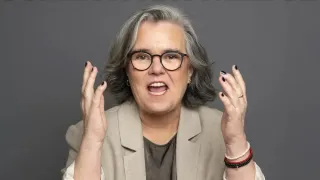February 4, 2015
Medicaid Expansion Again Looms Large in States
EDGE null READ TIME: 3 MIN.
While 27 states and the District of Columbia chose to expand Medicaid eligibility to 138 percent of the federal poverty level by the end of 2014, more states are likely to consider expansion in 2015.
Debra Miller, CSG's director of health policy, said states that expand this year are likely to follow the lead of Arkansas, Iowa, Michigan and Pennsylvania and design state-specific programs that will require a waiver from the federal government.
"The pressures on the states that have not already expanded Medicaid are growing," Miller said. "Providers, especially hospitals, worry about their revenues. Many in the dollars-and-cents crowd worry about the economic loss of leaving federal money on the table. Consumer advocates tout the advantages of health insurance coverage not just for those newly covered, but for employers and the overall economy."
The federal government will reimburse states 100 percent of the cost of expansion for calendar years 2014 through 2016, and at a reduced rate thereafter.
Miller listed Medicaid expansion as the top health care-related issue facing state policymakers in 2015. The Council of State Governments this week released its annual listing of top 5 issues legislators will face this year in education, energy and the environment, federal affairs, fiscal and economic development, health, international affairs, interstate compacts, transportation and workforce development.
The Medicaid expansion was a part of the Patient Protection and Affordable Care Act, which will again loom large in states. Twenty-seven states are served by a federally facilitated health insurance exchange, while 14 states opted to operate a state-run health insurance exchange. Three states have a federally supported marketplace and seven are served by a state-federal partnership marketplace. A case before the Supreme Court this term raises questions about the subsidies for insurance coverage under those federal exchanges.
"Depending upon the upcoming Supreme Court decision on the exchange and insurance subsidy question, states could be forced into another round of decisions around ACA implementation," Miller said.
Other health issues will compete for the attention of state policymakers, Miller said. Among the questions they'll need to consider, she said, are these: "How can states make sure there are enough health care providers to deliver the right services at the right time? How will aging baby boomers change demands on the health care system? Will parity between physical health and behavioral health be achieved? How can the scourge of heroin and prescription drug abuse be stopped?"
Health care costs account for one of every six dollars spent in the economy.
"The growing share of states' budgets spent on health care -- not just Medicaid, but state employee benefits, state retiree health care, and health costs in corrections as well -- dictates that each dollar be spent as efficiently and effectively as possible," Miller said.
She said states will look at integrating health and human services to "break down artificial funding and service silos." They also will increasingly apply evidence-based standards to guide programs and services, she said.
"State policymakers will look to tackle upstream factors such as poverty, racism and educational achievement in order to reduce downstream costs," said Miller.






